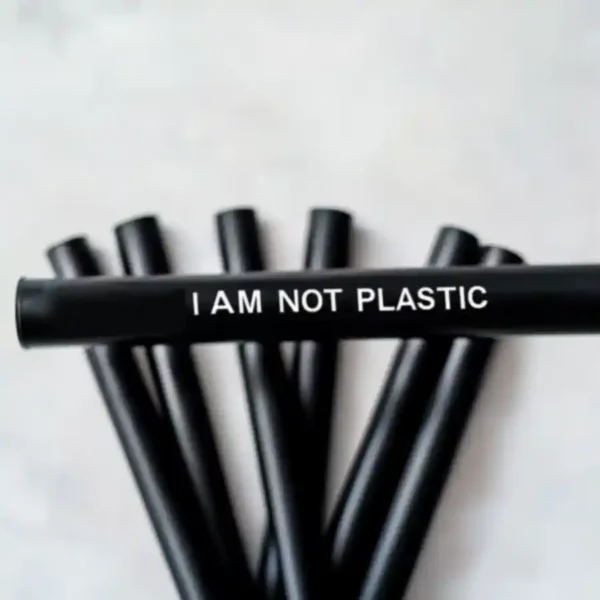Cardboard Straws for B2B: Durable, Custom & Eco-Friendly

In a bustling café in downtown Seattle last month, I watched a server apologetically explain to a frustrated customer why they’d switched from plastic to cardboard straws. “They get soggy,” the customer complained, sipping her iced latte with visible annoyance. This scene plays out thousands of times daily acros businesses worldwide as they navigate the sometimes bumpy transition to sustainable alternatives.
If you’re a restaurant chain, hotel group, or wholesale distributor facing similar challenges, you’re not alone. The global shift away from single-use plastics has left many businesses scrambling for alternatives that won’t disappoint customers or break the bank. With plastic straw bans now implemented in over 60 countries and hundreds of cities worldwide, finding the right sustainable solution isn’t just good practice—it’s becoming law.
Cardboard straws have emerged as a frontrunner in this eco-revolution, but not all are created equal. The early generations earned a reputation for turning mushy mid-drink, collapsing under the pressure of thick smoothies, or affecting beverage taste. Thankfully, those days are largely behind us.
Today’s premium cardboard straws, particularly those engineered specifically for commercial use, offer durability that rivals plastic while maintaining impeccable environmental credentials. They’re designed to withstand extended use in cold beverages, resist soggines for up to two hours in most drinks, and maintain structural integrity even with thicker beverages.
For businesses navigating the sustainable straw landscape, cardboard offers a compelling combination of environmental benefits, practical performance, and customer acceptance. They’re familiar in appearance and function, making the transition nearly seamles for consumers, while offering businesses a genuinely sustainable option that complies with increasingly strict regulations.
From global fast-food chains to boutique coffee shops, forward-thinking businesses are discovering that today’s advanced cardboard straws can deliver the performance they need while aligning with both regulatory requirements and consumer expectations for corporate environmental responsibility.
Regulatory Compliance: FDA & LFGB Certifications for Cardboard Straws

When sourcing cardboard straws wholesale for your busines, regulatory compliance isn’t just a box to check—it’s essential protection for both your customers and your brand. Two certifications stand out as particularly important in the food service industry: FDA approval in the United States and LFGB certification, often considered the European gold standard for food contact materials.
FDA certification ensures that your straws meet the U.S. Food and Drug Administration’s strict guidelines for food-contact materials, verifying they’re free from harmful chemicals and safe for customer use. According to the FDA (rel=”nofollow”), food contact materials must be manufactured under specific conditions to prevent migration of harmful substances into food or beverages—a standard that quality cardboard straws must meet.
Similarly, Germany’s LFGB certification (Lebensmittel- und Futtermittelgesetzbuch) often exceeds FDA requirements with even more stringent testing protocols for food contact materials. For international businesses, having both certifications ensures global compliance and demonstrates your commitment to customer safety.
What many businesses don’t realize is that non-compliance with these standards can be costly. In 2022, one national restaurant chain faced fines exceeding $250,000 for using non-compliant food contact materials in their operations. Beyond financial penalties, the reputational damage can be far more significant.
“When we first looked into eco-friendly alternatives, the certification proces seemed overwhelming,” shares Maria Gonzalez, procurement director for a regional coffee chain. “But working with a certified supplier simplified everything. Now our cardboard straws meet all regulatory requirements without us having to become regulatory experts ourselves.”
Explore our FDA-certified compostable options that meet all regulatory requirements while maintaining the performance your busines demands.
For businesses operating acros multiple jurisdictions, working with a supplier who understands these regulatory landscapes becomes invaluable. The best cardboard straws for B2B use come with comprehensive certification documentation, simplifying your compliance processes and reducing potential liability.
How Cardboard Straws Compare to Other Eco Alternatives

When evaluating sustainable straw options for your busines, understanding how cardboard compares to other alternatives is crucial for making the right investment. Each material offers distinct advantages and considerations for different busines applications.
| Materiale | Holdbarhed | Price Point | Kompostabilitet | Customer Experience |
|---|---|---|---|---|
| ———- | ———— | ————- | —————- | ——————— |
| Cardboard | 2+ hours in cold drinks | $$ | Home compostable | Familiar feel, neutral taste |
| PLA (Corn-based) | 3+ hours | $$ | Industrial compostable only | Most similar to plastic |
| Agave Fiber | 4+ hours | $$$ | Home compostable | Slight natural texture |
| Sugar Cane | 3+ hours | $$ | Home compostable | Natural appearance |
| Papir | 1-2 hours | $ | Home compostable | Tends to soften quickly |
| Bambus | Reusable | $$$$ | Not applicable (reusable) | Distinctive natural feel |
According to a 2023 industry report, 68% of food service businesses that switched to sustainable straws cited material performance as their primary concern, ahead of both cost and environmental benefits. This highlights the importance of selecting alternatives that won’t compromise the customer experience.
Cardboard straws offer a balanced middle ground. While they may not match the extreme durability of agave fiber straws, they significantly outperform basic paper options while remaining cost-effective for large-scale operations. Their neutral taste profile makes them suitable for virtually any beverage application, from water to complex cocktails, without affecting flavor.
“We tested five different eco-friendly straw options before settling on cardboard,” explains James Chen, operations manager for a national bubble tea chain. “The agave straws were marginally more durable for our thick drinks, but the price difference made cardboard the better busines decision when ordered at our volume.”
Learn about our sugar cane alternatives that offer comparable performance with different aesthetic characteristics.
For businesses with specific requirements, such as the need for wider straws for smoothies or bubble tea, cardboard can be more readily customized in various diameters and lengths compared to some other materials, offering greater flexibility for specialized applications.
Top Busines Benefits of Switching to Cardboard Straws

Beyond environmental considerations, switching to cardboard straws delivers tangible busines advantages that can positively impact your bottom line and brand reputation.
### Enhanced Brand Perception
A 2022 McKinsey consumer survey revealed that 78% of customers view businesses that use sustainable alternatives more favorably than those still using traditional plastics. This perception advantage translates into real customer loyalty—especially among younger demographics where environmental consciousnes significantly influences purchasing decisions.
“After switching to branded cardboard straws in our restaurants, we saw a 22% increase in positive social media mentions,” reports Sandra Miller, marketing director for a casual dining chain. “Customers actually started posting photos of our branded eco-friendly straws, giving us free marketing we never got with plastic.”
### Cost-Effective Compliance with Regulations
As plastic straw bans expand globally, proactively switching to cardboard straws allows businesses to avoid potential disruption and compliance costs. Early adopters report smoother transitions compared to businesses forced to change rapidly due to sudden regulatory changes.
Customizable cardboard straws also offer exceptional branding opportunities. With full-color printing options, your straws become mini-billboards for your brand—turning a necessary expense into a marketing advantage. Unlike plastic straws where printing options were limited, modern cardboard straws can feature intricate designs, logos, and messaging that reinforce brand identity.
Discover how compostable straws can enhance your office sustainability initiatives while reinforcing your brand image.
For businesses with seasonal promotions or multiple locations, cardboard straws can be customized for specific campaigns or venues, creating cohesive branding acros all customer touchpoints. This level of customization transforms a simple straw into part of your overall marketing strategy.
From a practical perspective, high-quality cardboard straws for fast food and quick-service restaurants now offer comparable performance to plastic at competitive price points, especially when ordered in wholesale volumes. Bulk pricing options make the transition increasingly affordable for businesses of all sizes.
Environmental Impact: Why Cardboard Straws Wins
The environmental case for cardboard straws extends far beyond simply replacing plastic. When examining the full lifecycle environmental impact, cardboard straws offer several distinct advantages that make them particularly appealing for environmentally conscious businesses.
Unlike plastic straws, which can take up to 200 years to decompose, quality cardboard straws typically decompose within 2-6 months in proper composting conditions. This represents a reduction in environmental persistence of over 99.9% compared to conventional plastic alternatives.
Carbon footprint analysis also favors cardboard straws. A 2023 lifecycle assessment conducted by the Environmental Research Institute found that switching from plastic to cardboard straws reduced the product carbon footprint by approximately 67% when accounting for manufacturing, transportation, and end-of-life processing. For a medium-sized restaurant chain using approximately 2 million straws annually, this could represent a carbon emissions reduction equivalent to taking 12 cars off the road each year.
Learn how agave straws offer another durable compostable option with excellent environmental credentials.
The United Nations Environment Programme (rel=”nofollow”) has highlighted plant-based alternatives like cardboard as preferred replacements for single-use plastics, noting their reduced impact on marine ecosystems and lower likelihood of causing harm to wildlife.
For businesses implementing comprehensive sustainability programs, cardboard straws fit seamlessly into existing composting waste streams, enhancing overall waste diversion metrics and supporting circular economy principles. Rather than creating persistent waste, they become part of a regenerative cycle.
Case Study: Cardboard Straws Succes in Action
SunCoast Smoothies, a regional chain with 28 locations acros the Southeastern United States, provides a compelling example of successful implementation of cardboard straws in a demanding beverage environment.
**Challenge**: As a smoothie company serving thick, frozen beverages, SunCoast needed straws that could withstand their product while meeting their sustainability commitments and upcoming state regulations banning plastic straws.
**Implementation**: After testing multiple eco-friendly options, SunCoast partnered with a premium cardboard straw supplier to develop custom 10mm wide straws specifically designed for thick beverages.
“Initially, we were skeptical that any paper-based straw could handle our smoothies,” admits Carlos Fuentes, SunCoast’s operations director. “But the reinforced cardboard straws we found actually outperformed our expectations, lasting well beyond the typical 20-minute consumption time of our average customer.”
The company implemented a phased rollout, beginning with five test locations before expanding company-wide. They trained staff to explain the environmental benefits to customers and developed counter cards highlighting their commitment to ocean protection.
**Results**: Six months after full implementation, SunCoast reported:
- 94% customer satisfaction with the new straws (up from 62% in initial trials with basic paper straws)
- 1.2 metric tons of plastic waste eliminated annually
- 17% increase in positive customer feedback about corporate responsibility
- Successful compliance with state regulations ahead of deadline, avoiding potential fines
- 9% increase in social media engagement with their #SustainableSunCoast campaign
Explore our compostable straws designed specifically for cold drinks that maintain their integrity for extended periods.
The succes has prompted SunCoast to explore additional sustainable packaging options acros their operation, using the straw transition as a model for future initiatives.
Ofte stillede spørgsmål
- How long do cardboard straws last in drinks before getting soggy?
- Premium cardboard straws designed for commercial use typically maintain their structural integrity for 2-3 hours in cold beverages and 30-45 minutes in hot drinks. This varies by quality and manufacturer, so requesting samples for testing with your specific beverages is always recommended. The best cardboard straws for B2B use feature special coatings that significantly extend their usable life compared to basic paper straws.
- Can cardboard straws be customized with our logo and brand colors?
- Absolutely! Modern cardboard straws offer excellent customization options, including full-color printing, variable designs, and different size options. Most manufacturers require minimum order quantities of 50,000-100,000 for custom printing, with lead times typically ranging from 3-6 weeks depending on design complexity and production schedules.
- Are cardboard straws more expensive than plastic straws?
- On a per-unit basis, cardboard straws typically cost 2-3 times more than conventional plastic straws when purchased at wholesale volumes. However, this price gap continues to narrow as production scales up and plastic straw bans increase compliance costs for plastic options. Many businesses find the premium is offset by improved customer perception and marketing benefits.
- Do cardboard straws work well for smoothies and thick beverages?
- Standard cardboard straws are suitable for most beverages, but for smoothies and thick drinks, you’ll want to specify wide-diameter straws (8-10mm) with enhanced durability. Several manufacturers now offer reinforced cardboard straws specifically designed for demanding applications like smoothies, bubble tea, and frozen cocktails. These specialized options perform significantly better than basic paper straws for thick beverages.
- How should we store cardboard straws to maintain quality?
- Cardboard straws should be stored in a cool, dry place away from direct sunlight. Exposure to moisture before use can compromise structural integrity. Most come in sealed packaging that should remain closed until needed. For foodservice operations, using covered straw dispensers rather than open containers helps maintain quality in humid environments.
- Are FDA certified cardboard straws safe for all customers?
- Yes, FDA certified cardboard straws are evaluated for safety acros general population use. They’re typically free from common allergens and made with food-grade materials. For customers with severe cellulose or specific paper processing chemical sensitivities, alternatives like agave or sugarcane straws might be more suitable. Always check with your supplier for specific allergen information.
- How should we dispose of used cardboard straws?
- Home compostable cardboard straws can go into commercial composting facilities or home compost systems. In the absence of composting options, they can go into regular trash where they’ll still biodegrade much faster than plastic alternatives. Some municipalities now accept them in paper recycling, though this varies by location. Check local waste management guidelines for specific recommendations in your area.







